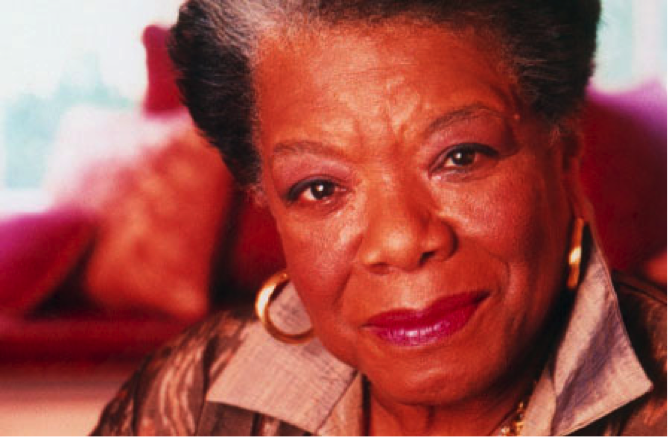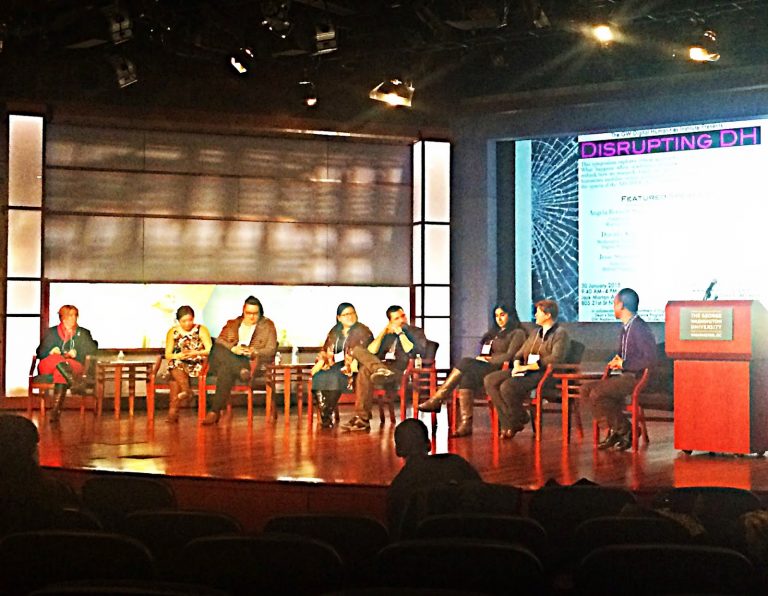 |
Waimea community mural depicting first
Poynesian explorers coming to Kaua’i.
Photo: Sharon Snyder |
As Fall Semester 2014 is about to kick off, GW English is happy to revive its “On the Road” series, which keeps you apprised of faculty research and exploration around the world. We kick off the series this year with a posting from Professor David Mitchell, who spent the summer in Kaua’i. You may have seen Professor Mitchell’s piece “A Dangerous Mixture in Poison Valley: Neoliberalism, Pesticides, and the Anti-GMO Movement” in
Truthout. If not, you can read the full article
here. What follows is a shorter version of Professor Mitchell’s
Truthout piece.
Kaua’i’s Mutating Environment and the Anti-GMO Movement
David Mitchell
A Merger of Mutating Embodiments
For the past few years my partner and I have been spending a significant amount of time on the island of Kaua’i. My mother-in-law and her partner are 20+ year residents of the islands and have lived on Kaua’i since 2009. Prior to our recent series of return visits, we spent much of our time travelling in Europe, Central America, Canada, and Asia during semester breaks and summers. The point is that choosing a spot to re-frequent such as Kaua’i is a shift in our travel practices and this change suggests something powerfully alluring about the island itself.
The island of Kaua’i is the oldest formation in a Hawaiian chain of land formations that is composed of more than 135 islands. Most of us know the “big six”: Big Island (Hawaii), Oahu, Maui, Molokai, Lanai, and Kaua’i, but the geography proves much more diversified than this group of more recognizable island names suggests. Kaua’i is a “red dirt” island due to the rich iron content of the volcanic soil formed from decomposed basalt. The island is the only island in the Hawaii chain formed by the melding of two separate massive volcanic eruptions that merged together to make the island of Kaua’i today. It is also the oldest and northern most island in a chain which has been more than 60 million years in the making (relatively young in geologic time particularly given that Polynesian migrants didn’t discover and settle the islands until 300 to 800 CE).
In James Michener’s novel Hawaii he poetically describes the uniqueness of Kaua’i by referencing the originality and wildly mutating productiveness of its Nature: “There was then, as there is now, no place known on earth that even began to compete with those islands in their capacity to encourage natural life to develop freely and radically up to its own best potential. More than nine out of ten things that grew here, grew nowhere else on earth.” This theme of productive mutation strongly represents why we find the island so appealing as scholars and as disabled people. It spurs our creativity and enfolds our diverse, mutating embodiments in ways that few other places can do.
In her characteristically succinct yet understated and mildly ironic style, the writer Joan Didion once wrote in Democracy that land formations such as those that make up the South Pacific islands are “a transitional accommodation to stress . . . and therefore every erosional landmass along the Hawaiian Ridge – is a temporary feature, and every rainfall or tremor along the Pacific plates alters its shape and shortens its tenure as the Crossroads of the Pacific.” This strange mix of antiquity, originality of flora and fauna, while, at the same time, exuding reminders of geologic temporality work in combination with each other to create the uncanny features that mark this island as so seductive. The odd geographical pastiche makes for fertile conditions that promote reading and writing (the ‘rithmetic is performed mostly by the accountants of Agribusiness, more on this below). These catalyzing forces comprise another reason why this place has become so magical for those of us who visit frequently.
Of Island Chains and Food Chains
Another reason for our investment in the island of Kaua’i involves the fragility of the ecosystems here. They serve as a frontline indicator of ways to protect and destroy the environment in which we humans and non-humans live in communion with each other in the complex interplay of organic and inorganic matter. Upon arriving on the island this summer my partner’s mother, a member of the citizen activist group Kaua’i Rising, sent us an article about Genetically Modified corn (GMO) against which (along with voluminous pesticide sprayings) much of local Kaua’ian culture struggles. As a key site for agribusiness’s experimental farming exploits, Kaua’i represents both an example of a wildly natural environment as well as a toxic dumping ground for corporate despoliation. Perhaps the only damaging anti-eco business left to come is fracking. While it may seem completely counterintuitive for fracking to come to a volatile geographical area such as the Pacific Rim I submit that the high pressure practice is already occurring in equally unstable zones such as along the Pacific Ocean’s Monterey Shale and in California on the San Andreas Fault.
 |
The main entrance to Dow AgriBusiness on the east
side of Waimea is nestled between a Pre-School
and a Low-Income Housing Project.
Photo: Sharon Snyder |
Imagine the impact of this overwhelming practice of dumping toxins on an island with a diameter of only 562.3 miles? Queer linguistic theorist Mel Chen’s claims to the inevitability of our living with the strangely mobile inorganic compounds of toxicity not withstanding (in the Animacies), I tend to find myself agreeing fervently with scholars such as Stacy Alaimo who find that citizen/activists and activist/scientists tend to supply the siren call for encroaching toxicity dangers. There is rarely empirical proof to back toxicity claims by people living within harm’s spray of corporate and state-sponsored practices that destroy the environment and threaten organismic health on the planet. Yet without them the glacial nature of evidence that things we are doing to the environment resound with catastrophic results for all go unheeded in times of relatively unfettered exploitation of natural resources; this is a ground zero of neoliberalism.
The odd particularities of neoliberal governing tactics came to mind for many of us on the island when it turned out that the governing County Council of Kaua’i illegally blocked a petition signed by more than 8,000 residents to stop GMO development by the likes of Monsanto, Dow Agribusiness, BASF (yes, your old cassette tape manufacturing company), Syngenta, among others. Historically, petitions that receive the requisite number of signatures go directly to ballot without hindrance because they represent the purest expression of the will of the people. Thus, 4 of the 7 Councilpersons employed an unprecedented abuse of power to keep the will of the people from reaching a simple vote by the larger population. The reason given for the unprecedented blockage (when reasons were given) was that the petition for amendment potentially encroached upon the rights of Agribusiness to decide its own practices. Allowing the petition to go to a vote would give people who live on the island affected by GMO and its attendant pesticide spraying “too much say” in how corporations manage their privately owned lands.
Of course, such a contention used to block the petition was exactly the point of holding a signature drive to get it on the November ballot. Thus, Council deployed the very logic of a peoples’ petition to undermine its viability for consideration by the wider Kaua’i electorate. Further private contacts with the Councilpersons to ask what they thought they were doing in exercising such an abuse of power were met with either silence or a contention that they were supporting Bill 960 under consideration in Honolulu federal court. Bill 960 involves a court case brought by private Agribusiness lawyers to prevent local municipalities (such as Kaua’i) from exerting excess say over how Agribusiness uses land that it leases from a private school company established exclusively for privileged native Hawaiian students. In other words, one petition to block further GMO development until the corporations can prove their product neither harms people nor animals was toppled by another bill at the federal level to prevent such petitions from exerting a people’s governance over the use of local lands.
 |
Politicking for votes in Poison Valley by
Kaua’i County Councilpersons supporting GMO.
Photo: Sharon Snyder |
These are the new machinations of neoliberalism that govern on behalf of paving the way for corporate markets rather than on behalf of the people.
Conclusion: What’s In A Label?
So where do we stand in relation to GMO development and the citizen/scientist chronicling of its harmful effects? According to journalist Ronnie Cummins who has pioneered some significant exposés of the Agribusiness industry, there are three basic principles with which we need to struggle. First, we must begin to reckon with the mounting scientific evidence that GMO food and crops as well as the pesticides used to develop them are hazardous to people and animals. Second, GMO remains an ideological foundation stone to the cultivation of an increasingly poisoned food chain that now predominates in many agricultural and industrialized geo-political zones of the world where Agribusiness works its magic. Third, fraudulent labeling practices such as “natural,” “all natural,” and even “almost organic” allow manufacturers to mislead the public into thinking it is buying nutritious alternatives that are often at the forefront of environmental toxicity. Beyond these important facts about GMO production it is also important to understand that in Europe where GMO labeling is mandatory GMO-based Agribusiness has been almost completely run off the grocery store shelves. To place a GMO label on the package of any food is equivalent to placing a “skull and crossbones” there as one industry executive for Monsanto explained nearly 20 years ago.
This significant consumer market impact is exactly the reason why Bill 960 in Honolulu and the Kaua’i Rising Charter amendment petition to limit GMO based food production until Agribusiness produces evidence of the safety of their product are being fought so vigorously by corporation lawyers and lobbyists at the federal, state, and local levels. These grassroot activist measures threaten state and private industry efforts to preserve profit at the expense of people and other organisms with whom we share the environment.
 |
Waimea cemetery and smoke stack
with “poison valley” in the background.
Photo: Sharon Snyder |
During our visit, two citizen-activist groups, the Center for Food Safety and Hawaii Seed, co-hosted presentations by doctors from the Philippines who have been working on the effects of GMO and pesticides in human beings. One of the speakers, Dr. Romeo Quinjano, identified pragmatic steps for combatting the effects of the GMO industry: 1) make Agribusiness prove that what it’s doing is safe, the Precautionary Principle, by providing scientific backing for their pesticidal overlays of GMO crop development; 2) expand monitoring of GMO spread and the accompanying toxins at the local, state, and federal levels; 3) fund independent scientific studies that are not financed by the financial interests of Agribusiness; 4) continue to recognize people power as the frontline fortification against unmitigated Agribusiness expansion. Somewhat soberingly these recommendations almost exactly mirrored the recommendations identified in the Charter amendment that the Kaua’i County Council blocked upon presentation of the requisite 8,000+ signatures to move the petition forward to the ballot in November as Charter Amendment Article 33.
Without these efforts to combat Agribusiness’s intensions to make docile citizens complicit in their poisoning campaigns “from above” there is little hope of refuting misinformation “from below.”
Corporations often disparage citizen knowledge of their bodies and the relations they posit to environmental contaminants as ill conceived.
The case of Kaua’i citizens against the GMO industry is indeed “ill conceived”:
particularly in the sense that people’s bodies are going awry in the onslaught of chemicals being introduced into their environments.
This “felt knowledge” of harm “from below,” as Nikolas Rose puts it, “pluralizes biological and biomedical truth by introducing doubt and controversy, and relocate[s] science in the fields of experience, politics, and capitalism.” This pluralization of truth is the dynamic, organic, ever mutating present that Kaua’i embodies for those trying to preserve a sustainable futurity for the island.
 |
Sign posted by residents in the town of Kilauea calling attention to
the Kaua’i cocktail’s deadly mix.
Photo: Sharon Snyder |











